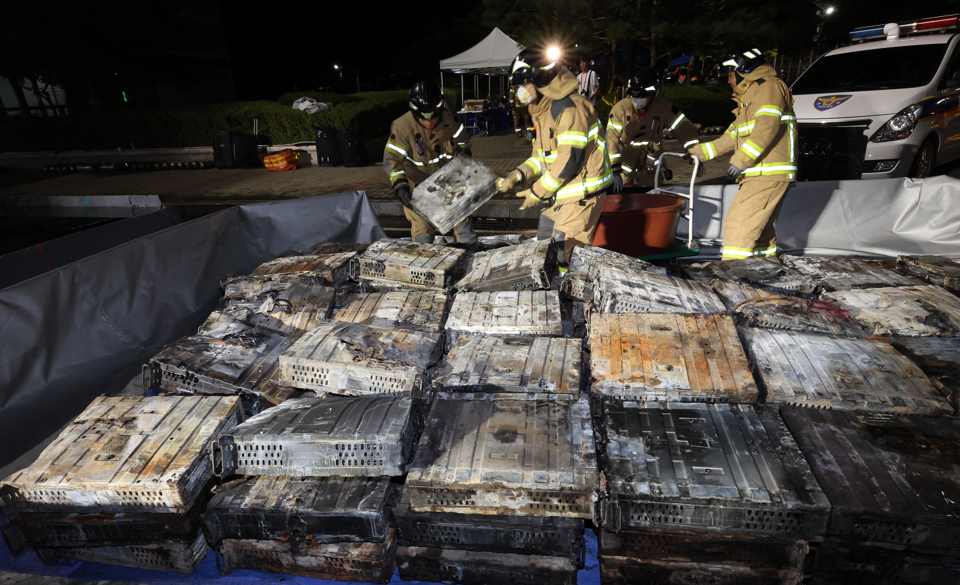
The fire at the National Information Resources Service (NIRS) in Daejeon on the 26th was more than a simple paralysis of a computing system; it clearly demonstrated how vulnerable the core infrastructure of advanced civilization is. The fire, which started from an Uninterruptible Power Supply (UPS) equipped with a lithium-ion battery, instantly disabled 647 government administrative systems and even led to the comical, yet real, spectacle of civil servants manually preparing approval documents.
This is the result of a dangerous lack of safety awareness, failing to learn lessons from similar past incidents, such as the fire at the SK C&C data center in Pangyo in 2022. The distance between the batteries and the servers was only 60cm, falling short of the international standard (minimum 90cm), and there were no firewalls. Furthermore, there are suspicions that batteries past their 10-year lifespan were being used, and the fire was triggered by work performed while the power was connected.
Lithium-ion batteries are essential for modern civilization, from smartphones and electric vehicles to UPS and Energy Storage Systems (ESS). However, their critical flaw is their susceptibility to fire. There have been 2,439 battery fires from 2021 to June of this year, and the 'thermal runaway' phenomenon—which occurs at high temperatures or due to damage—can cause the battery temperature to soar to nearly 1,000∘C, making it difficult to extinguish even with water.
Following the 2022 'Kakao service outage' incident, the government established a fire prevention manual, ordering private data centers to install partitions between batteries and servers, ensure sufficient spacing, and adopt batteries with built-in fire suppressants. However, the problem lies with aging data centers like the National Information Resources Service. Safety investments are being deprioritized due to budget shortages and complacency—the attitude of 'surely an accident won't happen'—resulting in the postponement of remodeling work.
While the aftermath of the fire has fueled widespread lithium-ion battery anxiety and distrust toward data centers, we cannot simply stop using lithium-ion batteries. That would be akin to saying we’ll live without smartphones. Data centers are the core infrastructure of the Artificial Intelligence (AI) era and the foundation supporting the future of mobility. Advanced devices like self-driving cars, UAM (Urban Air Mobility), and AI robots operate by constantly communicating with data centers. If a data center is incapacitated, a massive catastrophe—where moving cars stop and robots become tangled—cannot be avoided.
Until a definitive replacement for lithium-ion batteries, such as solid-state batteries, is commercialized, the rigorous adherence to safety manuals is the only solution. Specifically, urgent priority must be given to the safety remodeling of aging data centers that are vulnerable to fire. Furthermore, the relevant industries must accelerate the development of next-generation battery technologies with lower fire risk and hasten the adoption of batteries equipped with built-in fire suppressants.
It must be remembered that if South Korea fails to overcome the 'battery risk,' it will be unable to secure competitiveness in the future mobility and AI industries. The most pressing challenge left by this incident is not mere recovery, but the establishment of fundamental safety measures to support advanced systems.
[Copyright (c) Global Economic Times. All Rights Reserved.]




























